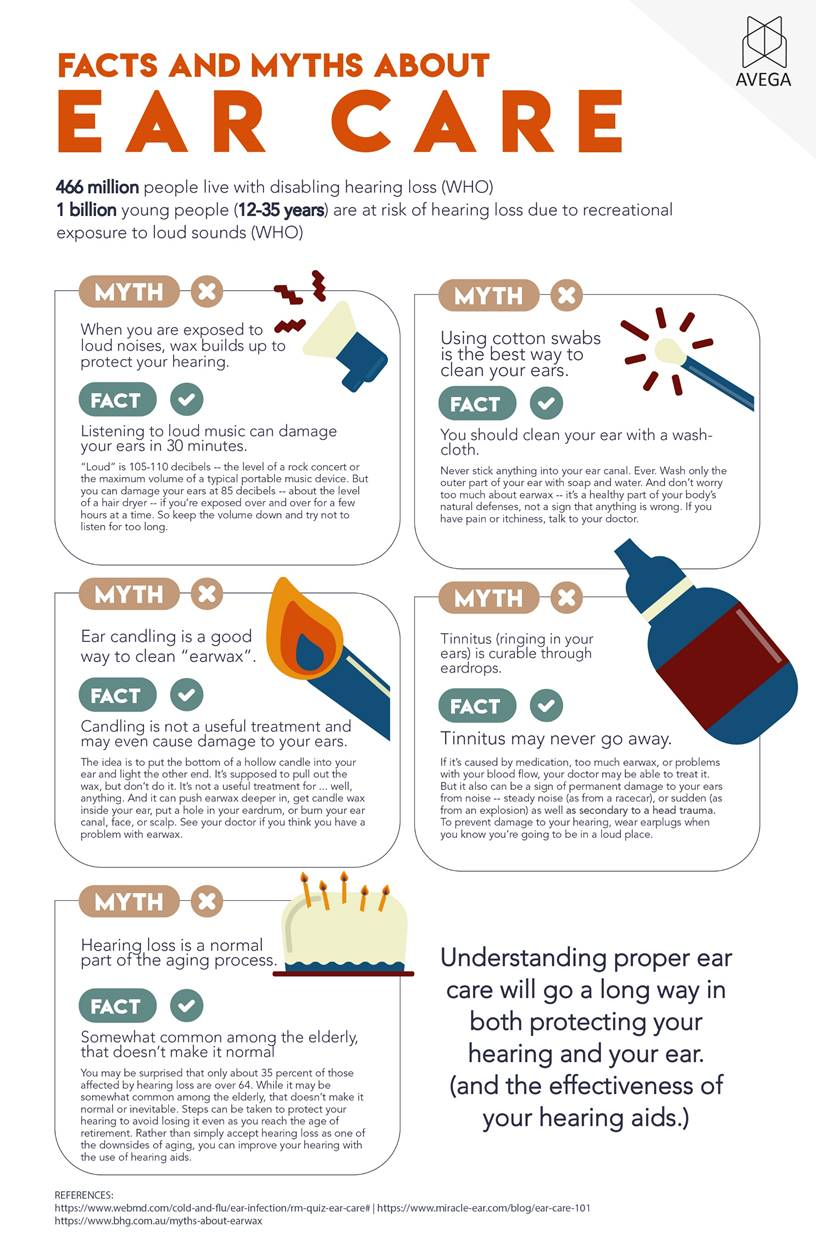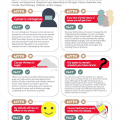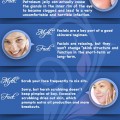“International Ear Care Day falls on the month of March. Here are some facts and myths on ear care.”
According to World Health Organization, around 466 million people live with disabling hearing loss. And 1 billion young people (12-35 years) are at risk of hearing loss due to recreational exposure to loud sounds.
Myth: When you are exposed to loud noises, wax builds up to protect your hearing.
Fact: Listening to loud music can damage your ears in 30 minutes.
“Loud” is 105-110 decibels – the level of a rock concert or the maximum volume of a typical portable music device. But you can damage your ears at 85 decibels – about the level of a hair dryer – if you’re exposed over and over for a few hours at a time. So keep the volume down and try not to listen for too long.
Myth: Using cotton swabs is the best way to clean your ears.
Fact: You should clean your ear with a wash-cloth.
Never stick anything into your ear canal. Ever. Wash only the outer part of your ear with soap and water. And don’t worry too much about earwax – it’s a healthy part of your body’s natural defenses, not a sign that anything is wrong. If you have pain or itchiness, talk to your doctor.
Myth: Ear candling is a good way to clean “earwax”.
Fact: Candling is not a useful treatment and may even cause damage to your ears.
The idea is to put the bottom of a hollow candle into your ear and the other end. It’s supposed to pull out the wax, but don’t do it. It’s not a useful treatment for…well, anything. And it can push earwax deeper in, get candle wax inside your ear, put a hole in your eardrum, or burn your ear canal, face, or scalp. See your doctor if you think you have a problem with earwax.
Myth: Tinnitus (ringing in your ears) is curable through eardrops.
Fact: Tinnitus may never go away.
If it’s caused by medication, too much earwax, or problems with your blood flow, your doctor may be able to teat it. But it also can be a sign of permanent damage to your ears from noise – steady noise (as from a racecar), or sudden (as from an explosion) as well as secondary to a head trauma. To prevent damage to your hearing, wear earplugs when you know you’re going to be in a loud place.
Myth: Hearing loss is a normal part of the aging process.
Fact: Somewhat common among the elderly, that doesn’t make it normal.
You may be surprised that only about 35 percent of those affected by hearing loss are over 64. While it may be somewhat common among the elderly, that doesn’t make it normal or inevitable. Steps can be taken to protect your hearing to avoid losing it even as you reach the age of retirement. Rather than simply accept hearing loss as one of the downsides of aging, you can improve your hearing with the use of hearing aids.
Understanding proper ear care will go a long way in both protecting your hearing and your ear (and the effectiveness of your hearing aids).
Source:
AVEGA Medical Bulletin
AVEGA Managed Care, Inc.



 (4 votes, average: 4.00 out of 5)
(4 votes, average: 4.00 out of 5)









